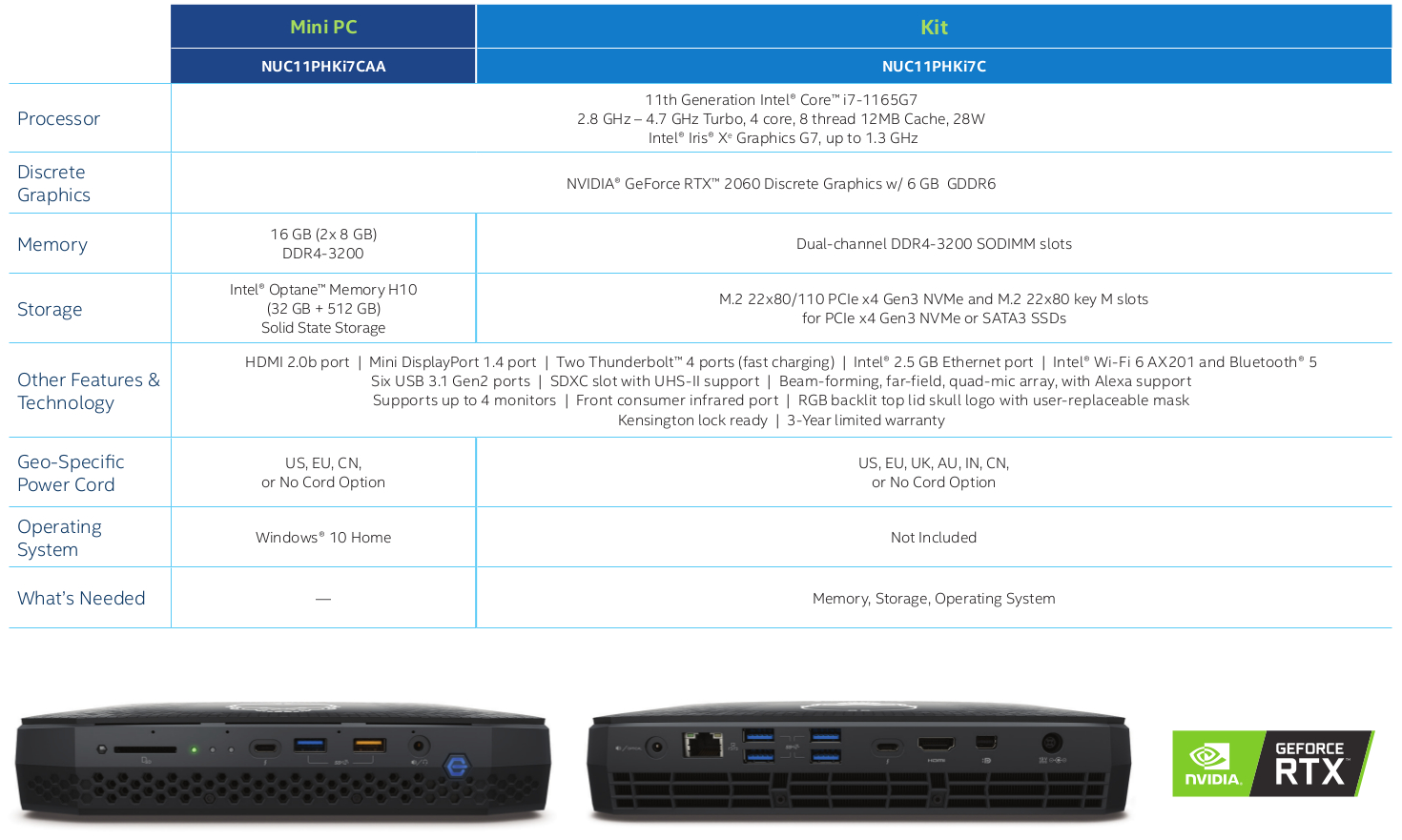Intel's Phantom Canyon NUCs: TDPs Hit 150W with Tiger Lake and GeForce
While Intel's NUCs come pre-built and ready to work out-of-box, some of the higher-end NUCs can get an aftermarket treatment from fanless chassis makers. Due to higher TDPs, that will apparently not be the case with the latest NUC 11 systems (codenamed Phantom Canyon). The new NUCs come powered by Intel's quad-core 11th-Gen Core 'Tiger Lake' processor as well as Nvidia's GeForce RTX 2060, but the powerful combination pushes TDPs up to 150W, making passive cooling impractical.
As it turns out, Intel's NUC 11 for enthusiasts has a combined TDP of 150W, as noticed by FanlessTech in a Twitter post. Such a high TDP makes it impossible to build a small passively-cooled chassis for the unit. By default, the system (which measures 221 × 142 × 42 mm) has a rather sophisticated cooling system featuring five heat pipes and a fan. A third-party fanless cooling solution would be too bulky, and therefore impractical for a small form-factor PC.
In fairness, Intel's NUC 11 Enthusiast is a rather capable system. The PC packs the quad-core Intel Core i7-1165G7 (up to 4.70GHz, 12 MB cache, 28W TDP-up) processor that is accompanied by 16 GB of DDR4-3200 memory (upgradeable to 64 GB), Nvidia's GeForce RTX 2060 discrete GPU with 6 GB of GDDR6 memory, and Intel's Optane Memory H10 (32 GB + 512 GB) or H20 SSD.
The CPU can be configured for a 15W or a 28W TDP, but the mobile GeForce RTX 2060 GPU can consume 80W or more (a desktop card consumes 160W). Considering that there are other components too, a 150W combined TDP seems fair for a Phantom Canyon system (especially considering various burst modes modern CPUs and GPUs have).
Without a doubt, it is disappointing for enthusiasts of ultra-quiet computing and passive cooling that it will be impossible to build a fanless PC using components of Intel's NUC 11 Enthusiast. Meanwhile, for those who want to have a very small PC that can run modern games, this system still makes a lot of sense.
Get Tom's Hardware's best news and in-depth reviews, straight to your inbox.

Anton Shilov is a contributing writer at Tom’s Hardware. Over the past couple of decades, he has covered everything from CPUs and GPUs to supercomputers and from modern process technologies and latest fab tools to high-tech industry trends.
